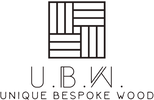|
Lacquered or Oiled Wood Flooring?
Why wood flooring? Well, if you have come this far as to choose which finish applying on your wood flooring, we can all guess the answer was the choice you made between artificial and genuine Or between eco-friendliness and hazardousness characteristic of the materials. That being answered, you should now be worrying about the new floorboard’s longevity and looks. The Finishing of the floor gives it protection from heavy traffic, furniture, pets and also any harshness of the environment. So what type of finish does your flooring need? What are the options out there? Which one lasts longer? Which one provides you with the amount of gloss or matte you’re seeking? We’ll be providing answers to all that and more, but just to feed your curiosity, for now, the answer to the first question is: you’ve got two options to choose from; lacquered flooring and oiled flooring. Each method has its criteria regarding durability, protecting capacity and visual effects. Engineered or Lacquered Oak Flooring Lacquer is polyurethane or a mixture of shellac and alcohol coating applied with a roller or brush on a wooden floor. Although it sits on top of the wood and does not protect its core, it fills in the pores and provides the harder protection among the two options. It is ideal for the living room or the doorway where you anticipate heavy footfalls and traffic. You can choose from gloss, matt, silk matt and extra matt finishes. But be assured that no matter how matt you go, there will always be some glossiness in your lacquered flooring. Another advantage of this coating technique is incredibly easy to clean and maintain. You can use the regular vacuum cleaner, a broom or a mop as the dust does not get a chance to sit in on the highly hardened floor. It is also the more waterproof of the two options. However, it is best not to spill drinks on a wooden floor despite what the label says. The major disadvantage of lacquered oak flooring is that it is easily scratched and scuffed, which on a shiny surface is not very easily avoidable by the eyes. These scratches are responsible for the reduced longevity of lacquered flooring. And once it has been damaged, the process of solving the problem is costly and requires sanding and repainting the entire surface of the floor. Preventive measures like taking your shoes off before entering the room with lacquered floor to prevent transferring sand and small stones, using rugs and carpets in areas with the highest traffic, and applying floor protectors to your furniture can help solve the problem of scratches and scuffs. Oiled Wood Flooring For oiled wood flooring, there are two options: natural oiled and UV oiled finishes. UV oiled is applied and dried under UV light which speeds up the drying process and ensures that another layer of coating is not needed. Oiled wood flooring is preferable if you’re going for the natural look and color of the wood. The oil sinks to the core of the floorboard and protects it from within. This prevents scratches and scuffs. The swelling characteristic of oiled flooring also hides local cracks more easily than lacquered flooring and therefore ensures the longevity of the flooring. However, this finishing requires intense maintenance. Another layer of oil is to be applied very soon after the first layer is dried. This also needs to be done at least twice a year. But once it is damaged, the cost of repair is much lesser than lacquered wood flooring. In conclusion, oiled wood flooring is not as waterproof and hard as lacquered wood flooring; it can be the best choice when you’re going for a more natural look. That being said, oiled flooring can sustain for up to 10 years if taken care of properly.
0 Comments
Leave a Reply. |
- Home
-
Collections
- Timeless - Engineered Wood Flooring
- Solid Wood Flooring
- Chevron Parquet Flooring
- Parquet
- Wide Plank Wood Floor
- Live Edge Wood Flooring
- Engineered Ash Wood Floor
- Engineered Walnut Wood Floor
- Textured Wood Flooring
- Versailles Parquet
- Parquet Panels
- Mansion Weave Parquet
- Antique Wood Flooring
- Wood Cladding
- Charred Wood
- Wood For Stairs
- Unfinished Wood Flooring >
- Bespoke Wood Floor
- Services
- Information
- Room Ideas
- BLOG
- Contact
- FAQ
- Trade Program
|
|
|
UNIQUE BESPOKE WOOD
74/76 MONTROSE TERRACE, EDINBURGH, EH7 5DP
UNITED KIGDOM
[email protected] / 01316529873
74/76 MONTROSE TERRACE, EDINBURGH, EH7 5DP
UNITED KIGDOM
[email protected] / 01316529873
FOLLOW US ON SOCIAL MEDIA
© COPYRIGHT 2022. ALL RIGHTS RESERVED.

 RSS Feed
RSS Feed